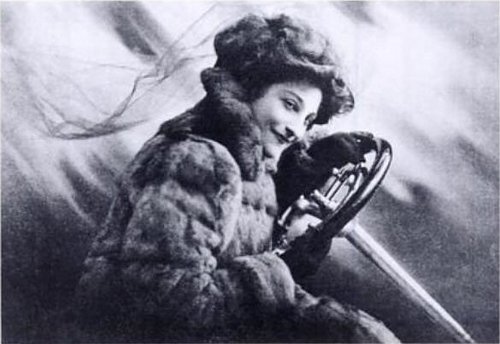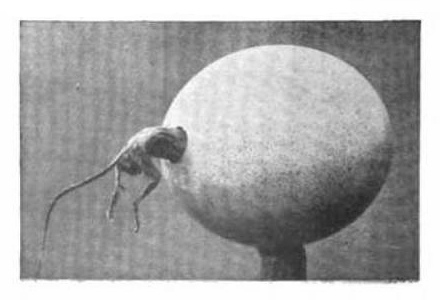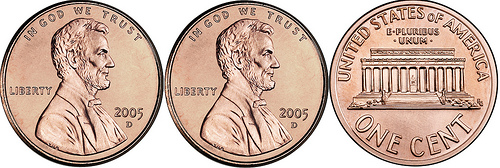From Lewis Carroll:
Men over 5 feet high are numerous.
Men over 10 feet high are not numerous.
Therefore men over 10 feet high are not over 5 feet high.
From Lewis Carroll:
Men over 5 feet high are numerous.
Men over 10 feet high are not numerous.
Therefore men over 10 feet high are not over 5 feet high.

Dorothy Levitt started as a secretary at the Napier Car Company, but when the publicity-minded boss offered her a chance to race for him, she revealed a soul of pure fire:
The “chauffeuse” also wrote a newspaper column and in 1909 published The Woman in the Car, “a guide for women motorists” with “simple and understandable instructions and hints” (including “If you are driving alone a dog is great company” and “It might be advisable to carry a small revolver.”)
Unfortunately, the Western Field reported in 1904, “She is also famous as being the first motorist to obtain substantial damages, amounting to thirty-five pounds sterling, or $175, from the owner of a horse-drawn vehicle which collided with her car.” But she made her own repairs.
“Of all the illusions that beset mankind none is quite so curious as that tendency to suppose that we are mentally and morally superior to those who differ from us in opinion.” — Elbert Hubbard
A family of four has to cross a river. The father and mother each weigh 150 pounds, and each of the two sons weighs 75 pounds. Unfortunately, the boat will carry only 150 pounds maximum. How can they get across?

I send you a photograph showing the untimely fate which befell a too inquisitive rat. It had managed to force its way into an ostrich egg, but then found that getting out was quite another matter, and so perished in the miserable manner shown in the following picture, which was sent to me by Mr. William Fisher, Mahalapye, B. Bechuanaland. — Miss G. Gardiner, 78, Guilford Street, W.C.
— Strand, July 1908
See “A Man Drowned by a Crab” and “A Rat Caught by an Oyster.”
Here is a short poem which is complete without any exercise of the imagination. The rhymes need no precedent clauses; they are heads and tails at once. In their simple way they tell the sad story of a common domestic tragedy:

— William Shepard Walsh, Handy-Book of Literary Curiosities, 1892
A guy goes into a bank and says he wants to borrow $200 for six months. The loan officer asks him what collateral he has, and he says, “I have a Rolls Royce. Here are the keys — you can keep it until the loan is paid off.”
Six months later the guy comes back and pays off the $200 loan, plus $10 interest. The loan officer says, “Here are the keys. If you don’t mind my asking, why would a man who owns a Rolls Royce need to borrow $200?”
The guy says, “I had to go overseas for six months. Where else could I store a Rolls Royce for $10?”

“How are you going to teach logic in a world where everybody talks about the sun setting, when it’s really the horizon rising?” — Cal Craig, quoted in Howard Eves, Mathematical Circles Revisited, 1971
misopedia
n. dislike of children

Let’s play a game. We’ll each name three consecutive outcomes of a coin toss (for example, tails-heads-heads, or THH). Then we’ll flip a coin repeatedly until one of our chosen runs appears. That player wins.
Is there any strategy you can take to improve your chance of beating me? Strangely, there is. When I’ve named my triplet (say, HTH), take the complement of the center symbol and add it to the beginning, and then discard the last symbol (here yielding HHT). This new triplet will be more likely to appear than mine.
The remarkable thing is that this always works. No matter what triplet I pick, this method will always produce a triplet that is more likely to appear than mine. It was discovered by Barry Wolk of the University of Manitoba, building on a discovery by Walter Penney.